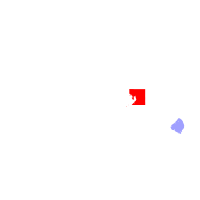Hillsborough County, FL
| Hillsborough County, Florida | |||||
|---|---|---|---|---|---|
| County | |||||
| Hillsborough County | |||||

The Hillsborough County courthouse, in May 2010.
|
|||||
|
|||||
 Location in the U.S. state of Florida |
|||||
 Florida's location in the U.S. |
|||||
| Founded | January 25, 1834 | ||||
| Named for | Wills Hill, Earl of Hillsborough | ||||
| Seat | Tampa | ||||
| Largest city | Tampa | ||||
| Area | |||||
| • Total | 1,266 sq mi (3,279 km2) | ||||
| • Land | 1,020 sq mi (2,642 km2) | ||||
| • Water | 246 sq mi (637 km2), 19.4% | ||||
| Population (est.) | |||||
| • (2015) | 1,349,050 | ||||
| • Density | 1,323/sq mi (511/km²) | ||||
| Congressional districts | 12th, 14th, 15th, 16th | ||||
| Time zone | Eastern: UTC-5/-4 | ||||
| Website | www |
||||
Hillsborough County is a county in the U.S. state of Florida. In the 2010 census, the population was 1,229,226, making it the fourth most populous county in Florida. Its county seat and largest city is Tampa.
Hillsborough County is part of the Tampa–St. Petersburg–Clearwater, FL Metropolitan Statistical Area.
Hillsborough County was created on January 25, 1834, from Alachua and Monroe counties, during the U.S. territorial period (1822–1845). The new county was named for Wills Hill, the Earl of Hillsborough, who served as British Secretary of State for the Colonies from 1768 to 1772. The County was created through efforts by Augustus Steele.
The county's 1834 area was much larger and included eight other present-day counties: Charlotte County, DeSoto, Hardee, Manatee, Pasco, Pinellas, Polk, and Sarasota.
...
Wikipedia


